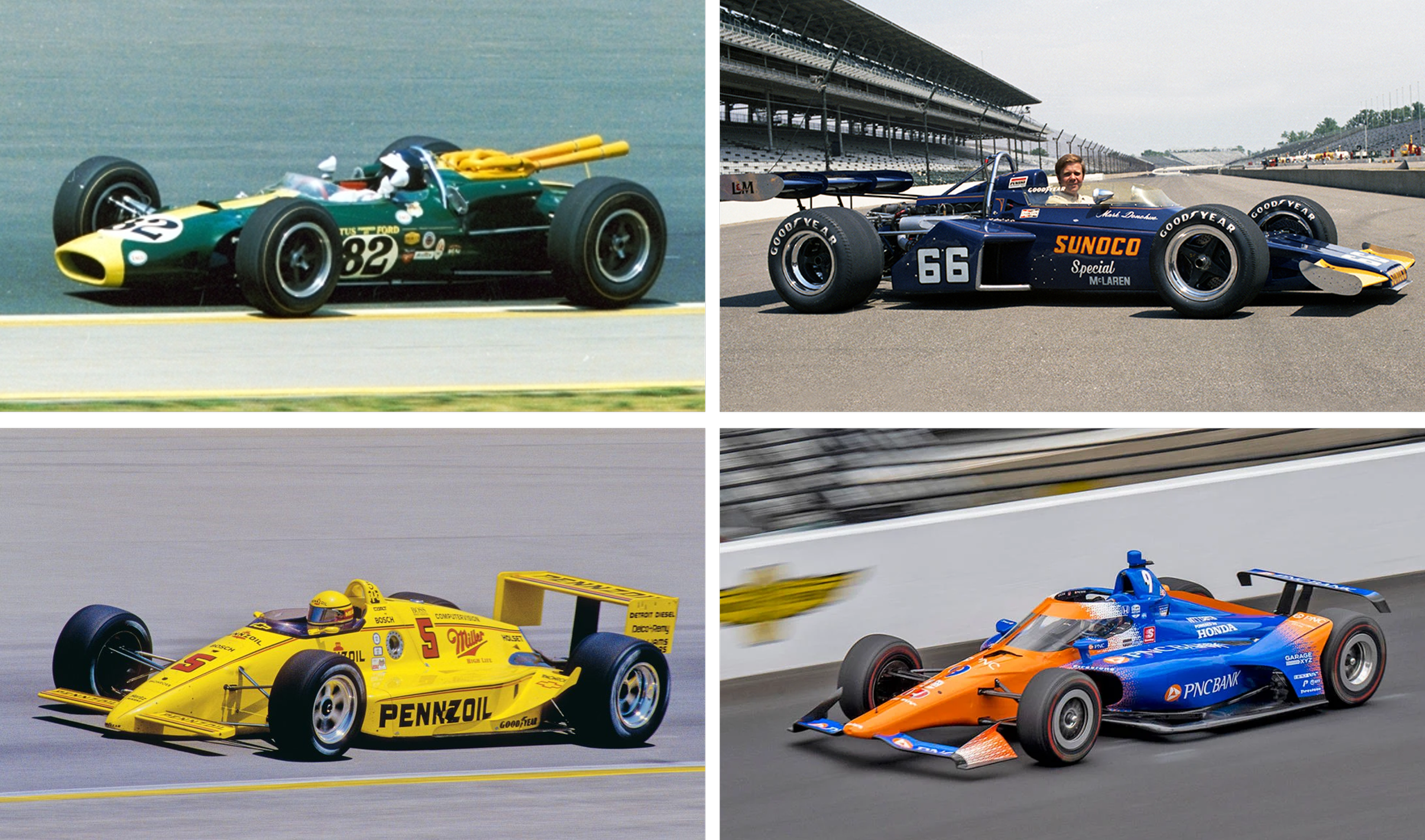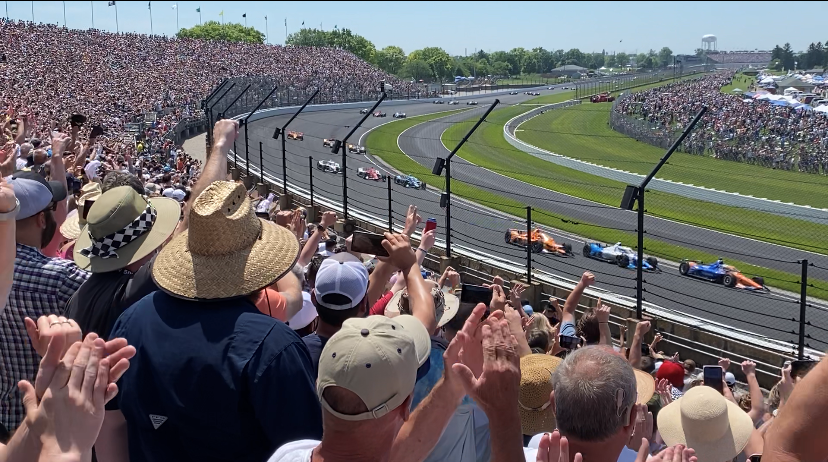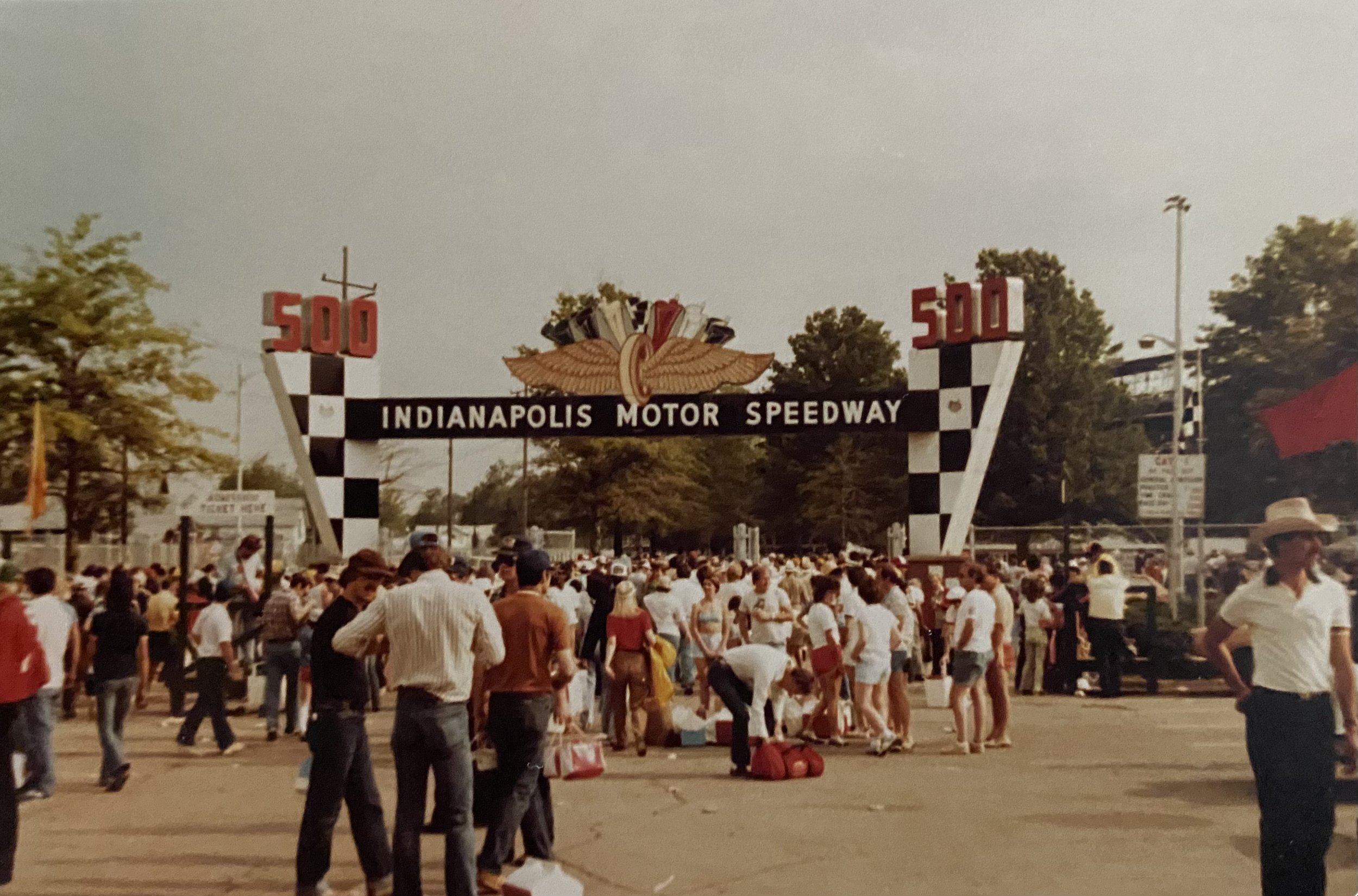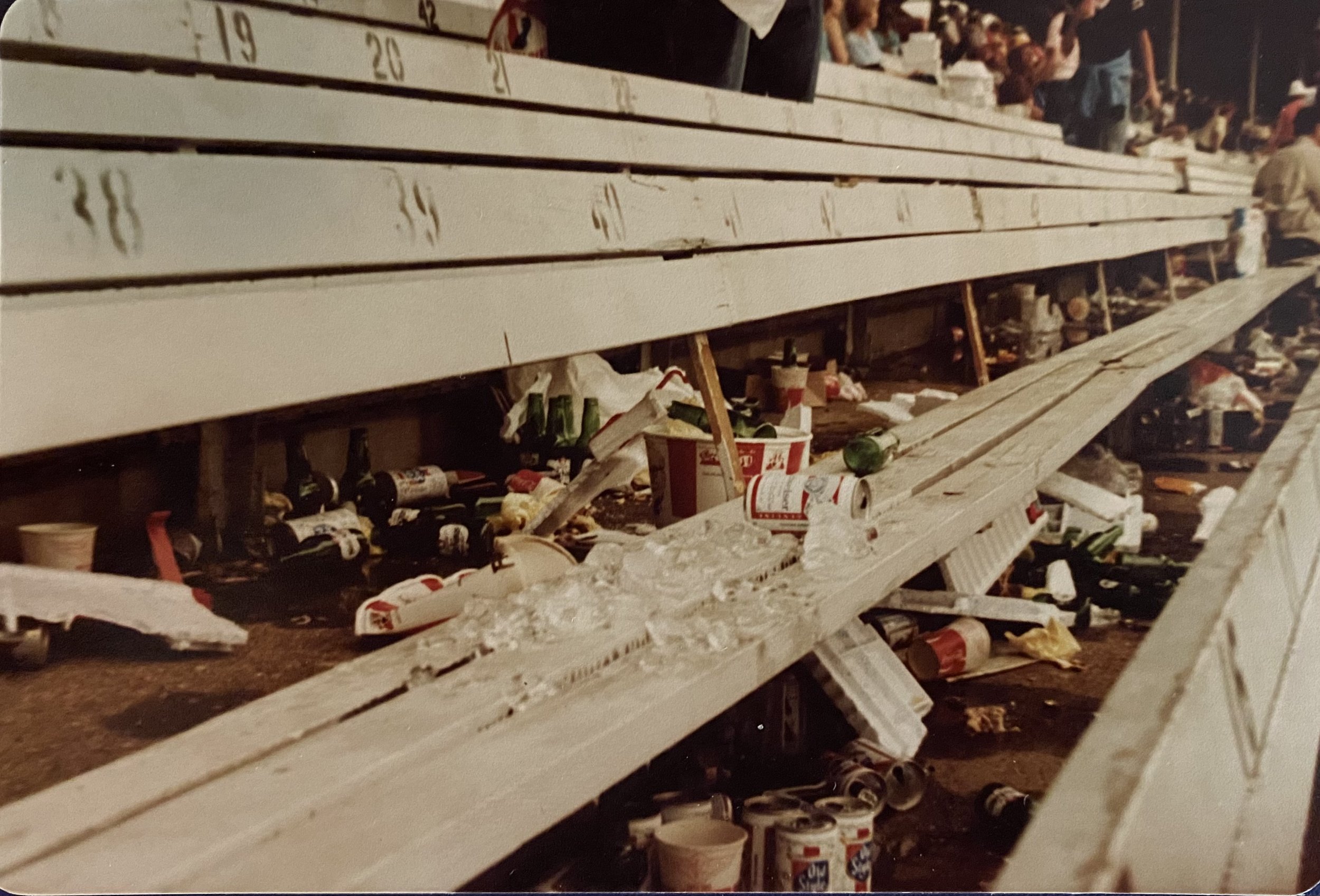HOMEWARD BOUND
The evolution of Indy racecars is evident in these photos. Top row L-R: Jim Clark (1965) and Mark Donohue (1972). Bottom row L-R: Rick Mears (1988) and Scott Dixon (2022). (Photo credit Indianapolis Motor Speedway)
Annual rite of passage
I’ve lived in Illinois 44 years, roughly two-thirds of my life. And as much as I enjoy living in Chicagoland, it will never truly be home. Because if home is where the heart is, then for me home remains Indiana.
Admittedly, Indiana is mostly too conservative for my moderately progressive ideals. However, between growing up in small town Plainfield and attending big time Indiana University, the Hoosier State formed me. (Two decades of living and working in big city Chicago and two decades living in a nearby suburb undoubtedly created the finished product that I’ve become.)
On the calendar, May is ensconced as a favorite month of the year. When I lived in Indiana, May was special but not revered the way it is now.
Since moving to Illinois in 1980, the annual Memorial Weekend trek across the state line into Indiana is a joyful journey. During other months it’s mind-numbing, driving down I-65 surrounded by flat, relentless farm landscape. In May it’s not boring at all. Interstate 65 becomes the gateway to a weekend filled with reminiscing among high school and college friends. And then we attend motorsports’ greatest race.
IU’s Bloomington campus, an oasis of progressiveness nestled in the rolling hills of southern Indiana, is in beautiful bloom in late-May. Due to daylight savings time, it stays light until 10pm, allowing old friends to rehash triumphs, screwups and hilarious tales late into the night.
Early Sunday morning, the drive north on Hwy. 37 to Hwy. 67/267 – with a pit stop in Plainfield – leads us to U.S. 40 on the way to our long-awaited destination… the Brickyard. Race day is amped with more anticipation than any other day of the year.
When the racecars pass through Turn Three for the first time, on the parade lap, it is magical. (Photo credit The Weekly Opine)
A spiritual experience
As they say, to each his own but, to me, the Indianapolis 500 is without peer. The “500” takes place in the world’s largest stadium in front of the world’s largest single-day sporting event crowd, some 300,000 spectators.
The pre-race ceremony oozes with emotion as the crowd participates in Memorial Weekend traditions that honor America’s military. Included is a goose bump-inducing, clarion playing of “The Taps” by a solo trumpet, complete with a thunderous military flyover.
The singing of “Back Home Again in Indiana,” for many years performed by the late Jim Nabors accompanied by the Purdue University marching band, brings emotions to a crescendo. No matter if you hail from Indiana or not, the song tugs at your heartstrings. (Chicago Blackhawks National Anthem singer – and IU grad – Jim Cornelison now sings “Back Home Again in Indiana” and sounds as good as the great Jim Nabors.)
Then the call comes for the 33 racers to start their engines. And you finally see the gleaming machines approaching. The experience is a mashup of tension and adrenaline that creates anticipation unmatched in sports.
At the Indianapolis 500 these days, everything feels more acute. The giant stadium. The huge throng. The speed. The sound. The connection back to my father bringing us to our first race, and the appreciation of being part of something so massive, and so integral to my formative years and beyond. The race has evolved into a cannot-miss-it cathartic experience.
In 1966, I was finally allowed to enter the old Main Entrance at the world’s greatest racecourse. (Photo credit The Weekly Opine)
In the beginning
The year was 1966 and my parents, succumbing to relentless pleading, took my brother and me to the first day of time trials. It was the start of a two-year test (only time trials) before we were allowed to attend our first “500” race, in 1968.
When you are just eight years old, and after having listened to the race on the radio and having occasionally seen the big racetrack’s grandstands hulking alongside Georgetown Road and 16th Street, finally getting inside was blissful.
The smell of hot dogs, beer and tobacco. Craziness in the “Snake Pit.” The smell of fuel. The sight of the sleek racing machines and the sound of their high-pitched turbocharged engines. And the booming baritone voice belonging to public address announcer Tom Carnegie, exclaiming, “It’s a new track record,” was spellbinding.
On that long ago day in May, I was hooked for life.
Dating back to 1911, there have been 106 Indy 500 races. Only four drivers have won the race four times. I was there when A.J. Foyt (1977), Al Unser (1987), Rick Mears (1991) and Helio Castroneves (2021) notched their fourth “500” victory.
In the 1980s and 1990s, the race day meal consisted of beer and fried chicken. By day’s end it was a mess! (Photo credit The Weekly Opine)
Racing reality
That first time inside the track, in May 1966, racing’s harshest reality was foisted upon us: motorsports is a dangerous sport.
Warming up before attempting to qualify, journeyman driver Chuck Rodee was zipping around the track at 160 mph when he spun in Turn One. Rodee’s car slid backwards, appearing to be in slow-motion before slamming into the retaining wall at around 90 mph. We were sitting in Turn One as this scene unfolded in front of us. Rodee, motionless, was placed on a stretcher and pronounced dead a short time later.
Unfortunately, I’ve witnessed two other competitors meet their fate at Indy. Both during the 1973 race. Swede Savage, a dashing 26-year-old racer from California, had a horrific crash just down the track from where we were sitting along the main straightaway. Savage died from his injuries nearly five weeks later. When Savage crashed a pit crewman, Armando Teran, stepped onto pit lane to run toward Savage’s mangled car. Teran was struck and instantly killed by a tow truck barreling the wrong direction down pit road. By age 15, I understood Indy could be unforgivingly cruel. Still, witnessing a pit crewman get run over by a tow truck was shocking.
Immediately following the 1973 “500” motorsports officials implemented measures to increase safety. Innovations continue to this day. Drivers now sit in a cockpit tub that remains intact during a crash, while the chassis around the tub disintegrates, which dissipates much of the energy on impact. Environmentally, the cars use 100% renewable fuel that reduces greenhouse gas emissions by 60 percent. And the tires include recycled plastic waste now used to create synthetic rubber.
Racetracks are much safer, too. Indy led the way by installing Steel and Foam Energy Reduction (SAFER) Barrier walls that absorb and reduce much of the kinetic energy during impact with the wall.
And racecar reliability has dramatically improved. Back in the day, due to mechanical failures and/or crashes, only about half of the 33 cars starting the race finished the race. Nowadays, the attrition rate is much lower. At the conclusion of the “500” there are usually 25 or more cars still running.
Fifty years after she was a “500” princess in 1973, my sister is no longer with us, having passed away last fall. (Photo credit Patty Haley/Indianapolis News)
Ahead of her time
On a more uplifting note, 50 years ago my sister, Deb, was chosen as one of the princesses in the 1973 Indy 500 queen’s court. It was an amazing honor for a young Black woman to be selected for such a highly visible position in such a prestigious event. Our little town of Plainfield was abuzz when one of their own was named to the queen’s court on one of sports’ biggest stages. The Indianapolis News reported that Deb stole the show with quick wit and humor. She did. Several judges told my parents they voted for Deb to be queen. Needless to say, we were quite proud.
Seats with a spectacular view
Over the years, I’ve sat all around the huge racetrack and never had a bad seat. Now, thanks to renewing the same Turn Three seats for over 25 consecutive years, my name is included in the race day program, among the “Most Loyal VIPs.”
Today, I will embark on my favorite trip of the year, going home to attend the Indianapolis 500.
It never gets old.
© 2023 Douglas Freeland / The Weekly Opine





